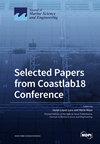Research on LSTM-Based Maneuvering Motion Prediction for USVs
IF 2.8
3区 地球科学
Q1 ENGINEERING, MARINE
引用次数: 0
Abstract
Maneuvering motion prediction is central to the control and operation of ships, and the application of machine learning algorithms in this field is increasingly prevalent. However, challenges such as extensive training time, complex parameter tuning processes, and heavy reliance on mathematical models pose substantial obstacles to their application. To address these challenges, this paper proposes an LSTM-based modeling algorithm. First, a maneuvering motion model based on a real USV model was constructed, and typical operating conditions were simulated to obtain data. The Ornstein–Uhlenbeck process and the Hidden Markov Model were applied to the simulation data to generate noise and random data loss, respectively, thereby constructing a sample set that reflects real experiment characteristics. The sample data were then pre-processed for training, employing the MaxAbsScaler strategy for data normalization, Kalman filtering and RRF for data smoothing and noise reduction, and Lagrange interpolation for data resampling to enhance the robustness of the training data. Subsequently, based on the USV maneuvering motion model, an LSTM-based black-box motion prediction model was established. An in-depth comparative analysis and discussion of the model’s network structure and parameters were conducted, followed by the training of the ship maneuvering motion model using the optimized LSTM model. Generalization tests were then performed on a generalization set under Zigzag and turning conditions to validate the accuracy and generalization performance of the prediction model.基于 LSTM 的 USV 机动运动预测研究
操纵运动预测是船舶控制和运行的核心,机器学习算法在这一领域的应用越来越普遍。然而,大量的训练时间、复杂的参数调整过程以及对数学模型的严重依赖等挑战对其应用构成了巨大障碍。为了应对这些挑战,本文提出了一种基于 LSTM 的建模算法。首先,基于真实 USV 模型构建了操纵运动模型,并模拟典型运行条件以获取数据。将奥恩斯坦-乌伦贝克过程和隐马尔可夫模型应用于模拟数据,分别产生噪声和随机数据丢失,从而构建出反映真实试验特征的样本集。然后对样本数据进行训练预处理,采用 MaxAbsScaler 策略进行数据归一化,采用卡尔曼滤波和 RRF 进行数据平滑和降噪,采用拉格朗日插值法进行数据重采样,以增强训练数据的鲁棒性。随后,在 USV 机动运动模型的基础上,建立了基于 LSTM 的黑盒运动预测模型。对模型的网络结构和参数进行了深入的对比分析和讨论,随后使用优化后的 LSTM 模型对舰船机动运动模型进行了训练。然后在之字形和转弯条件下的泛化集上进行泛化测试,以验证预测模型的准确性和泛化性能。
本文章由计算机程序翻译,如有差异,请以英文原文为准。
求助全文
约1分钟内获得全文
求助全文
来源期刊

Journal of Marine Science and Engineering
Engineering-Ocean Engineering
CiteScore
4.40
自引率
20.70%
发文量
1640
审稿时长
18.09 days
期刊介绍:
Journal of Marine Science and Engineering (JMSE; ISSN 2077-1312) is an international, peer-reviewed open access journal which provides an advanced forum for studies related to marine science and engineering. It publishes reviews, research papers and communications. Our aim is to encourage scientists to publish their experimental and theoretical results in as much detail as possible. There is no restriction on the length of the papers. The full experimental details must be provided so that the results can be reproduced. Electronic files and software regarding the full details of the calculation or experimental procedure, if unable to be published in a normal way, can be deposited as supplementary electronic material.
 求助内容:
求助内容: 应助结果提醒方式:
应助结果提醒方式:


